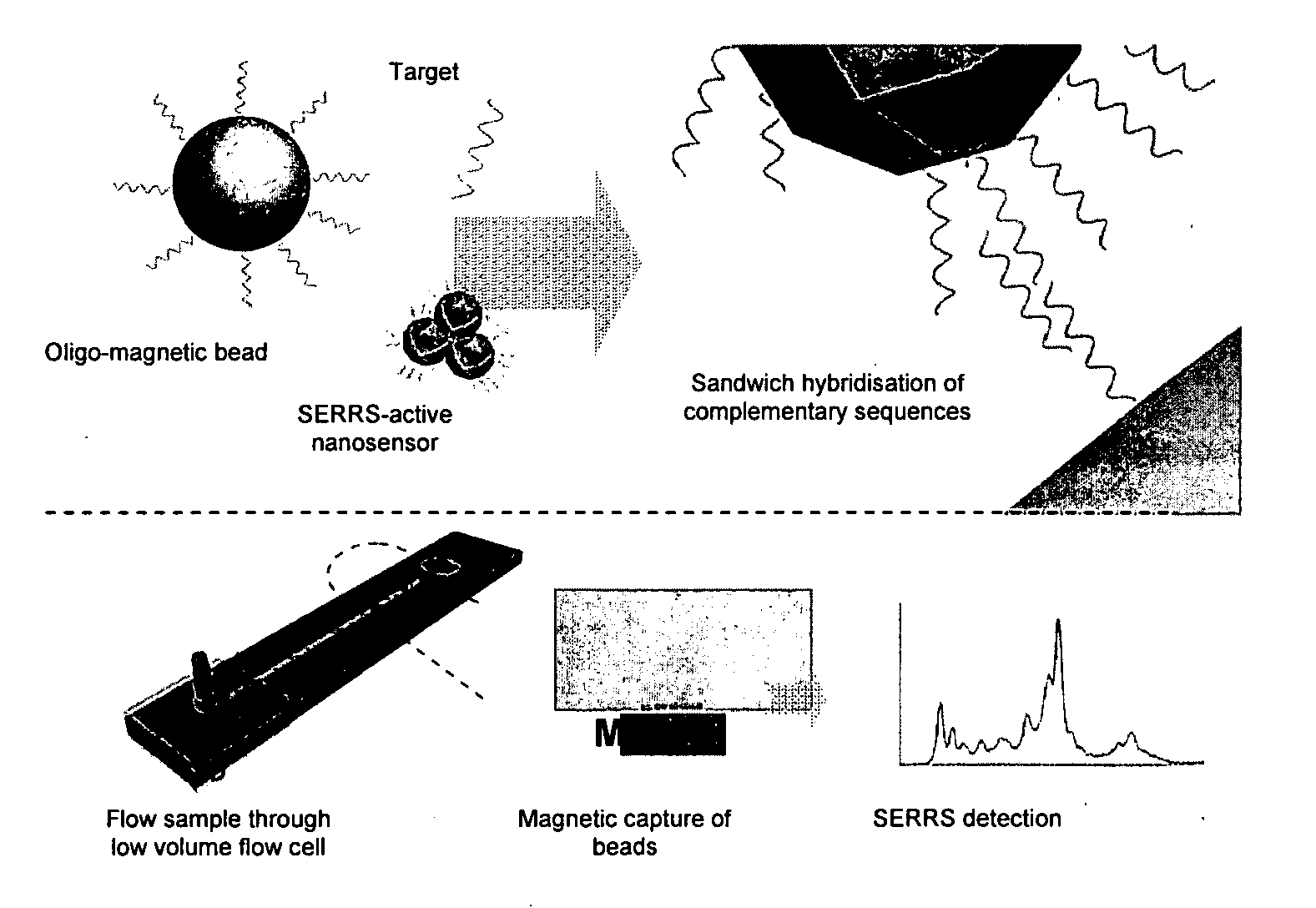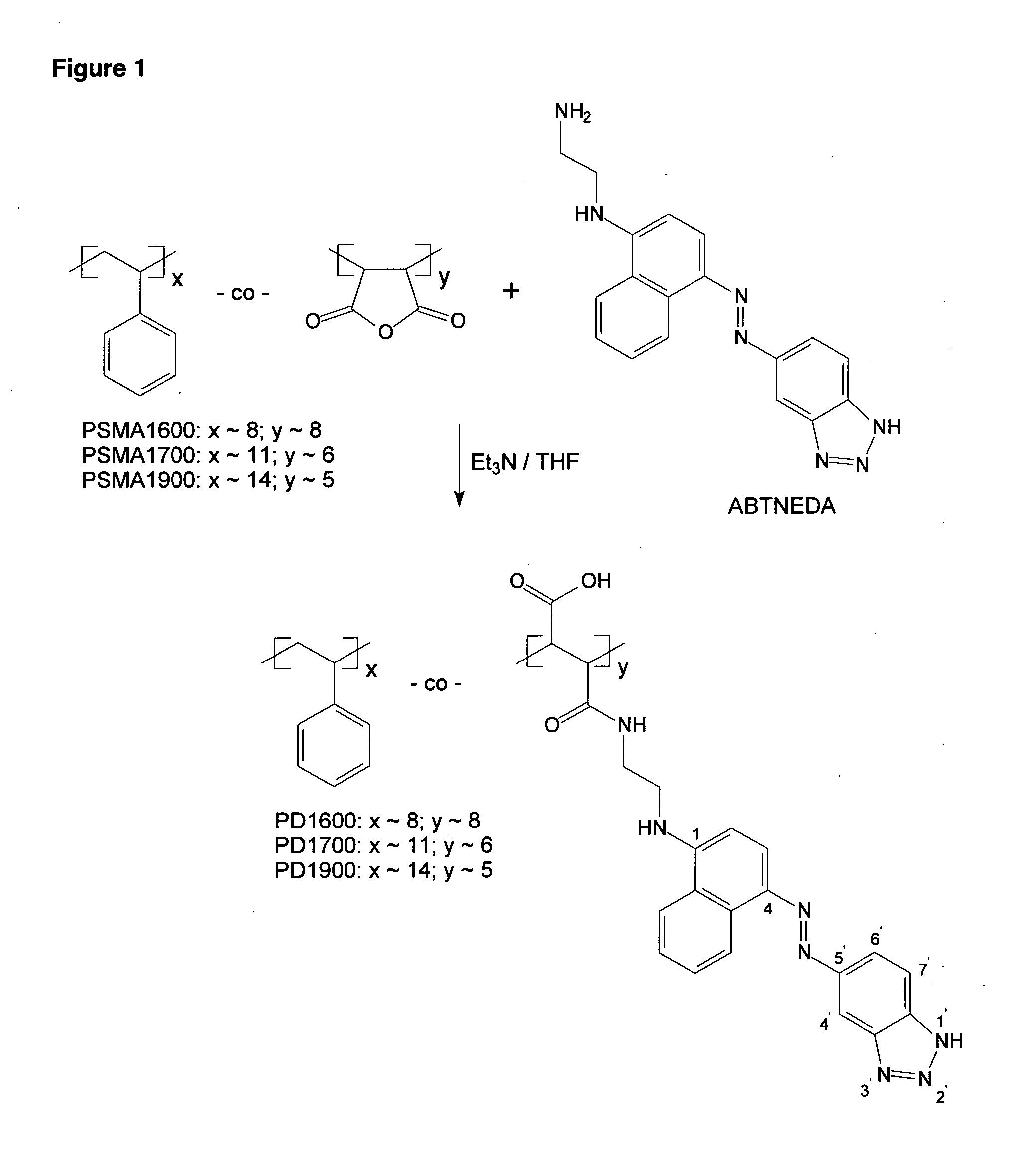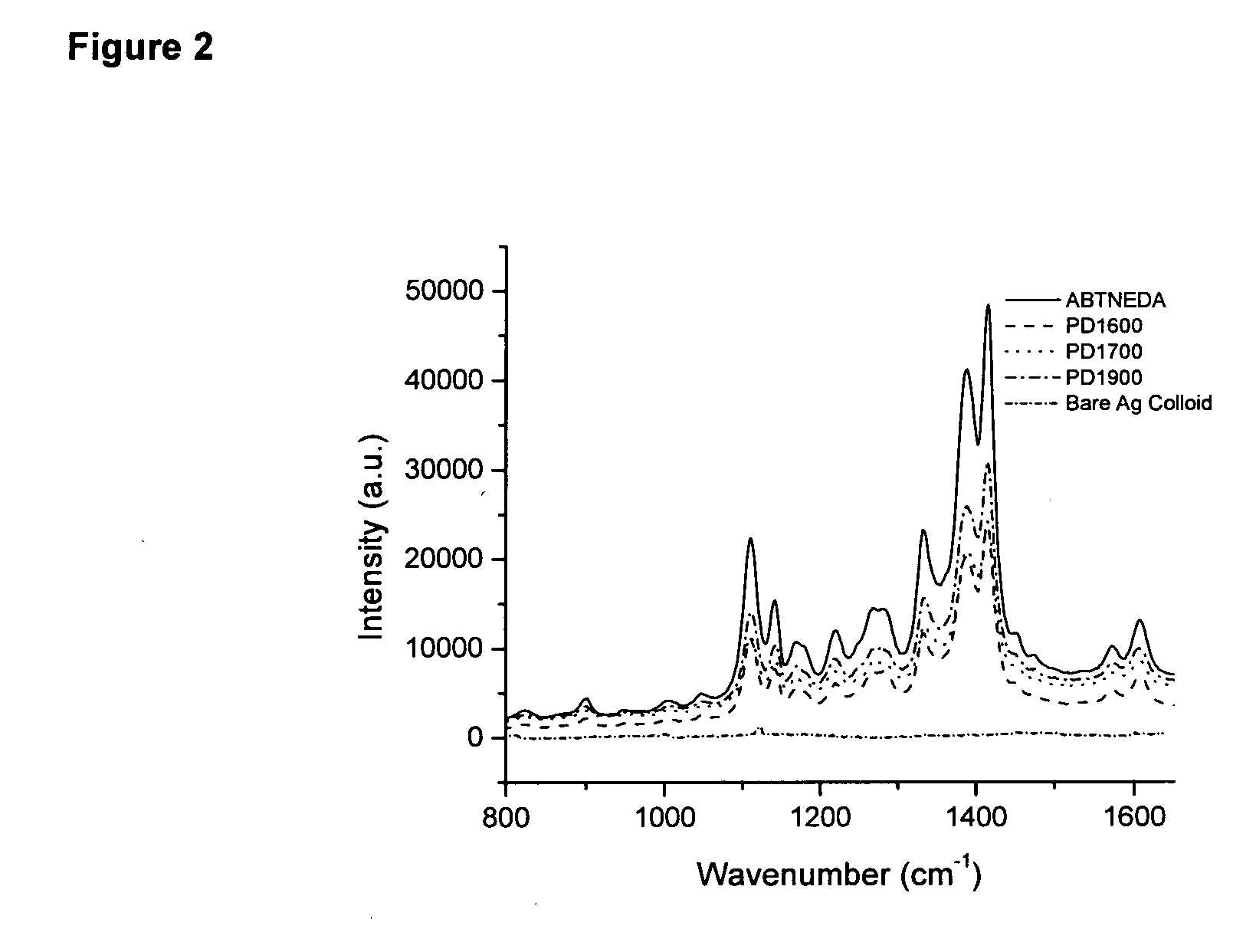Functionalised polymers for binding metal surfaces
a technology of functionalised polymers and metal surfaces, applied in the field of methods, can solve the problems of inability to use routine methods to control the aggregation of metal nanoparticles, nanoparticles,
- Summary
- Abstract
- Description
- Claims
- Application Information
AI Technical Summary
Benefits of technology
Problems solved by technology
Method used
Image
Examples
example 1
Preparation of Polyvalent Macromolecules
[0275]Three chemically-distinct styrene-maleic anhydride copolymers were investigated:
[0276]PSMA1600, PSMA1700 and PSMA1900. PSMA1600 had a number average molecular weight of 1600 and a maleic anhydride content of 50% (w / w). The corresponding values for PSMA1700 and PSMA1900 were 33% (w / w) and 25% (w / w), respectively.
[0277]The starting copolymers were dissolved in dry THF at 60° C. and treated with an excess of ABTNEDA in the presence of triethylamine under an inert atmosphere. The products precipitated and were isolated by filtration, purified by solvent extraction (THF) and dried in vacuo. Yields: PD1600, 67%; PD1700, 58%; PD1900, 73%. The FTIR and 1H NMR spectra were in agreement with the structures anticipated.
[0278]Thus, three dye-containing polymers of varying molar mass and dye contents, PD1600, PD1700 and PD1900, were prepared via ring-opening of the anhydride groups present in the parent macromolecules (FIG. 1). On average, PD1600 con...
example 2
Preparation of Nanoparticle Aggregates
[0279]To demonstrate that PD1600, PD1700 and PD1900 were potent SERRS dyes, they were incubated with silver colloid. FIG. 2 shows the SERRS spectra obtained from PD1600, PD1700 and PD1900-loaded silver colloid. In all three cases, sharp and intense SERRS signals were obtained at a dye concentration of 2×10−7 M. The signals appearing at ˜1395 cm−1 can be ascribed to the azo bond. The spectrum of ABTNEDA-loaded silver colloid is also displayed in FIG. 2 (the azo band appears at ˜1419 cm−1). It is noteworthy that this spectrum is remarkably similar to the spectra of PD1600, PD1700 and PD1900, thus the tethering of ABTNEDA to the macromolecules has had minimal impact upon its spectral features. Whilst, PD1600, PD1700 and PD1900 give rise to intense SERRS spectra, it is assumed that ABTNEDA gives rise to the highest signal intensities of all because it is of low molar mass, relative to the SERRS-active macromolecules, and gives better monolayer cover...
example 3
Stability of Aggregates / Anti-Corrosive Effects
[0280]The stability of dye-loaded, aggregated metal nanoparticles in 1.5 M aqueous sodium chloride (a powerful aggregating agent for nearly all silver colloid) was probed by electronic spectroscopy. The aim of these experiments was to test the ability of the polyvalent macromolecules to prevent hydrophilic etching of the metal surface when exposed to high salt concentrations.
[0281]In this study, the dye concentrations were varied from 1×10−8 M to 1×10−4 M and the electronic spectra measured as a function of time. In addition to the three SERRS-active macromolecules, the behaviour of ABTNEDA-loaded silver colloid and silver colloid in the presence of PSMA1600, 1700 and 1900 was investigated. Silver nanoparticles of size ca. 30 nm absorb EM radiation around 400 nm, and aggregation is normally indicated by a decrease in the extinction coefficient at around 400 nm and the emergence of a new, broad absorbance band at >600 nm characteristic of...
PUM
| Property | Measurement | Unit |
|---|---|---|
| Electric charge | aaaaa | aaaaa |
| Current | aaaaa | aaaaa |
| Digital information | aaaaa | aaaaa |
Abstract
Description
Claims
Application Information
 Login to View More
Login to View More - R&D
- Intellectual Property
- Life Sciences
- Materials
- Tech Scout
- Unparalleled Data Quality
- Higher Quality Content
- 60% Fewer Hallucinations
Browse by: Latest US Patents, China's latest patents, Technical Efficacy Thesaurus, Application Domain, Technology Topic, Popular Technical Reports.
© 2025 PatSnap. All rights reserved.Legal|Privacy policy|Modern Slavery Act Transparency Statement|Sitemap|About US| Contact US: help@patsnap.com



